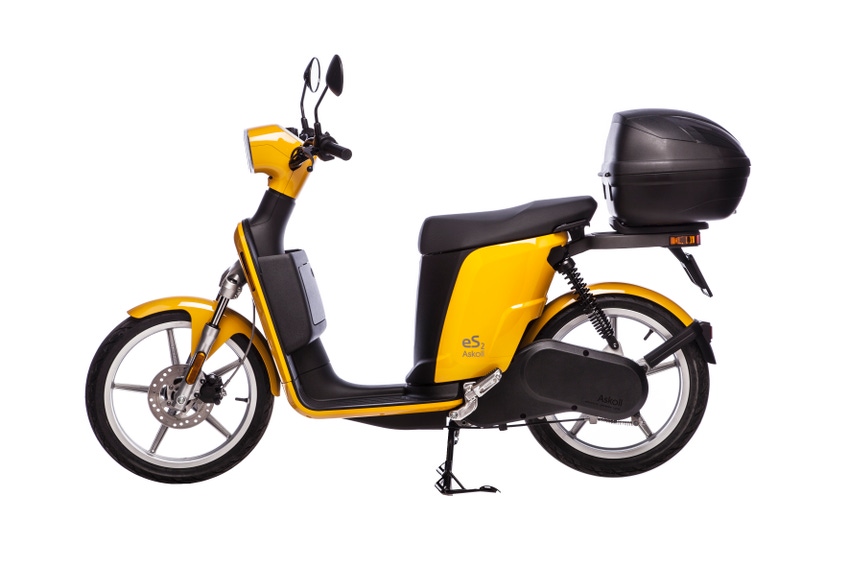July 14, 2016

An Italian electric bike and scooter manufacturer has turned to Germany’s Lanxess for a material to mold housing components for batteries. Pocan AF is a blend of PBT (polybutylene terephthalate) and ASA (acrylate styrene acrylonitrile) reinforced with 12 percent glass fibers.
“The new material forms part of our comprehensive product portfolio for electric vehicles. This segment offers good growth opportunities for our Pocan polyesters and Durethan polyamides, and we’ll be systematically expanding the range in close collaboration with development partners specializing in electric mobility,” says Tim Arping, a marketing expert in Lanxess’ High Performance Materials (HPM) business unit. Lanxess will be exhibiting the eS2 two-seater electric scooter from Askoll Holding srl, at its stand at the K 2016 plastics trade show in Düsseldorf.
Made-in-Italy electric scooter uses low-warp, flame-retardant PBT/ASA blend in battery housing components. |
The highly flame-retardant material is designed for large, geometrically complex housing components in electrical and electronic applications and, because it contains ASA, it benefits from a very low tendency to warp. In fire tests in line with the UL 94 test standard, it achieves the best classification of V-0 with a test specimen just 0.4 millimeters thick. Components made from this compound also have excellent surfaces that also benefit from very low emissions proven by VDA 278 thermal desorption measurements.
Askoll uses the material for the battery cell housing of its electric scooters. It replaces a material solution based on a polycarbonate/ABS blend. “Our material was selected not only due to its low tendency to warp and excellent flame-retardant properties, but also because it meets the strict requirements relating to chemical resistance, thermal stability and impact strength. It also supports a safe ultrasonic welding process,” explains Fabio Passeri, HPM’s Sales Manager for Italy/Switzerland.
The white and black compound colors used to make the battery housings and frames for the two electric bikes were developed for Askoll. The compound replaces a glass fiber-reinforced, flame-retardant PBT with a UL 94 V-0 classification. The blend material from Lanxess scored highly with its excellent resistance to light and moisture, which ensures it passes the relevant weathering tests based on the conditions of ISO 4892-3.
“The high color stability means there is no need for the components to have a separate UV protective coating, which delivers significant cost savings,” reveals Passeri. The excellent resistance to weathering also ensures that the blend’s exceptional mechanical properties withstand very long periods of exposure to light and moisture. This is confirmed by tests on the finished component based on various standards for the safety of batteries, accumulators and electric bikes such as UN 38.3, IEC 62133 and UNI EN 15194.
The Pocan AF product line currently comprises variants with 20 and 30 percent glass fibers. Their flame-retardant properties, hydrolysis stability and warping behavior are comparable to the new material used by Askoll, and they are ideal for applications requiring that little bit extra when it comes to rigidity and strength. Other potential applications besides battery cell housings include connectors that are subject to mechanical loads and housings for electronic circuits such as battery management systems.
You May Also Like


